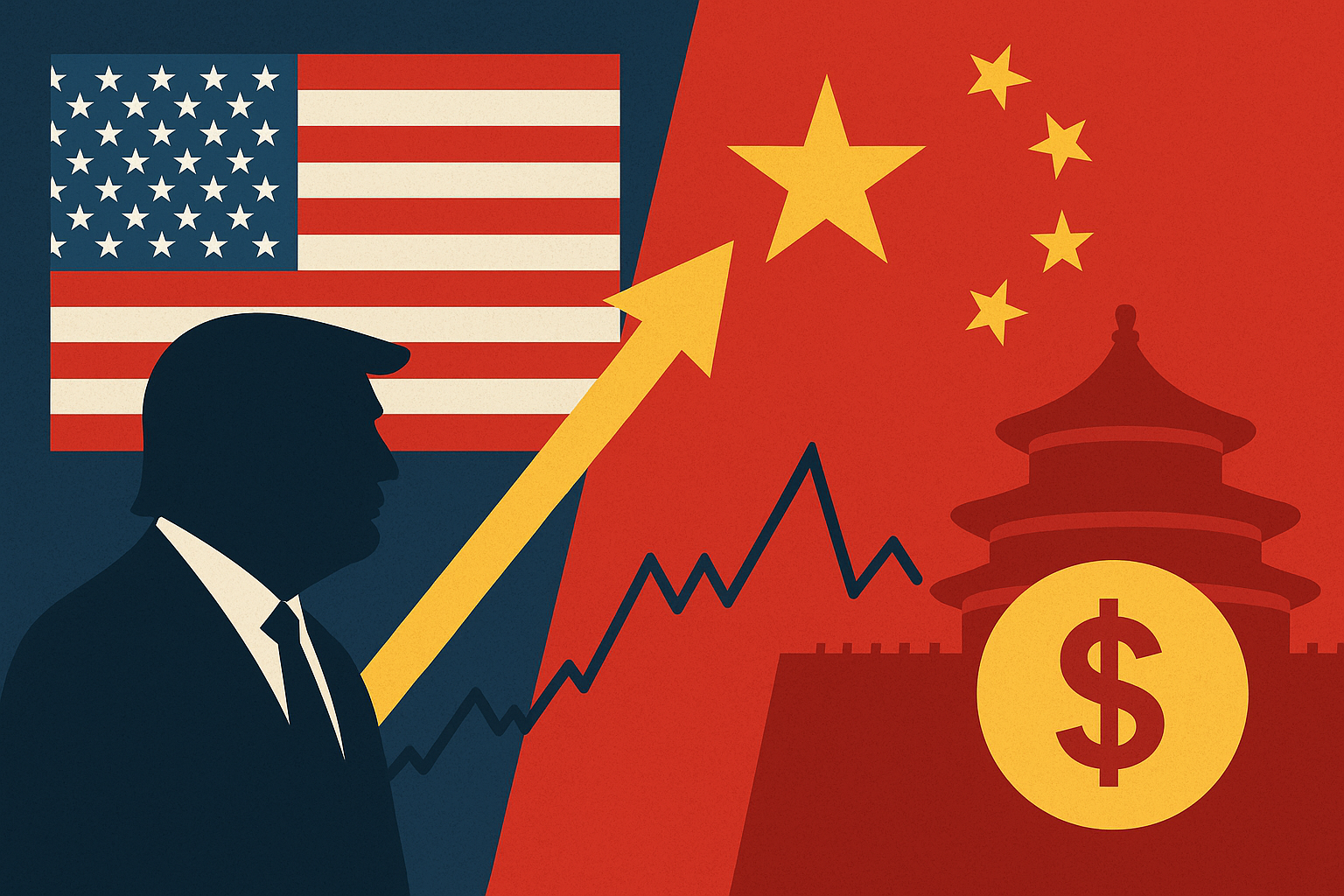Markets Cheer a Softer Tone, But Underlying Tensions Persist
Global markets surged on Monday as investors reacted to what appeared to be a cooling of rhetoric in the U.S.–China trade dispute. President Donald Trump signaled a willingness to engage with Chinese President Xi Jinping, suggesting a potential meeting later this month in South Korea. The remarks, coming after a week of market turbulence driven by escalating tariff threats, helped restore a measure of investor confidence and sparked a sharp rebound in risk assets.
Major U.S. indices rallied, with the S&P 500 and Nasdaq each gaining over 1.5%, while semiconductor and technology stocks led the charge. Reuters reported that Wall Street’s rebound reflected “broad relief across sectors,” as investors bet that the recent tariff war might be entering a cooling-off phase. The Philadelphia Semiconductor Index jumped more than 2%, buoyed by strong performances from Nvidia, Broadcom, and AMD—names often viewed as bellwethers of global supply chain health.
But beneath the relief rally lies a familiar cautionary tale: the structural rift between Washington and Beijing shows little sign of true resolution. For investors, the short-term calm offers opportunity—but also traps for the unwary.
Why This Matters for Investors
The U.S.–China trade relationship remains one of the defining macro forces shaping global capital flows, commodity prices, and corporate profitability. Since 2018, the two economic superpowers have oscillated between negotiation and confrontation—impacting sectors from semiconductors and electric vehicles to agriculture and rare earth mining.
Recent data from the U.S. Census Bureau shows that bilateral trade volumes fell nearly 6% in the first nine months of 2025 compared to the previous year, with technology and machinery accounting for most of the decline. Despite President Trump’s toned-down comments, the White House has yet to reverse or clarify previous threats of 100% tariffs on certain Chinese imports, leaving multinationals in limbo over future pricing and supply-chain strategies.
According to Bloomberg Intelligence, U.S. companies are currently absorbing roughly 80% of the tariff costs—rather than passing them on to Chinese exporters—contributing to margin compression across sectors reliant on imported components. That dynamic could complicate corporate earnings in Q4, particularly for consumer electronics and industrial manufacturers.
Early Signs of De-escalation—or Just a Pause?
Markets may be celebrating too soon. Analysts at Goldman Sachs cautioned in a note Monday that “the recent shift in tone reflects tactical moderation, not a structural thaw.” The underlying strategic decoupling—especially in areas like semiconductors, artificial intelligence, and green technologies—remains firmly in motion.
Adding to the uncertainty, Beijing this week expanded its export controls on rare earth elements, tightening licensing requirements for U.S. buyers. The move, reported by Reuters and The Washington Post, underscores how trade leverage has shifted toward critical minerals—a domain where China retains overwhelming dominance.
If trade talks fail to progress, investors could face renewed volatility. The last escalation cycle in 2024 saw the S&P 500 lose 6% in under two weeks, while the yuan slid to multi-year lows. The risk now is that similar headlines could once again trigger a rotation from growth into defensive sectors like utilities, healthcare, and staples.
Future Trends to Watch
1. Semiconductor Supply Chains:
The semiconductor space remains a key battleground. While U.S. firms such as Nvidia ($NVDA) and AMD ($AMD) benefit from AI tailwinds, the supply-chain dependency on Asia remains acute. Watch for any government signals on export licensing, chip funding, or new sanctions.
2. Rare Earth and Critical Minerals:
China’s tightening grip on rare earth exports could accelerate U.S. investment in domestic or allied mining ventures. Companies like MP Materials (NYSE: MP) or Lynas Rare Earths (ASX: LYC) may benefit from reshoring initiatives supported by U.S. defense and energy policies.
3. Corporate Margin Pressures:
Sustained tariffs, even if not expanded, act as a stealth tax on U.S. producers. Expect margin commentary during upcoming earnings calls—particularly from firms with global supply chains such as Apple ($AAPL), Tesla ($TSLA), and Caterpillar ($CAT).
4. Investor Sentiment and Hedging:
VIX futures suggest complacency may be creeping back in. Portfolio hedges through gold, utilities, or low-volatility ETFs could provide a cushion if rhetoric flares again.
Key Investment Insight
While Monday’s rally underscores the market’s appetite for positive headlines, structural risk remains embedded in U.S.–China economic relations. The prudent investor should treat the current upswing as an opportunity to rebalance rather than chase momentum. Rotating partially into domestic-oriented sectors or selectively shorting overextended growth names could provide insulation against renewed shocks.
Analysts agree that political volatility will remain a defining theme into early 2026. As Morgan Stanley’s latest note put it, “Trade policy risk has replaced interest-rate risk as the new volatility driver.” For now, investors should enjoy the calm—but stay positioned for turbulence.
Stay Ahead of the Curve
For investors navigating today’s volatile macro landscape, staying informed is your strongest asset. Follow MoneyNews.Today for timely analysis, market intelligence, and insights that cut through the noise—helping you make sharper, data-driven decisions every trading day.





